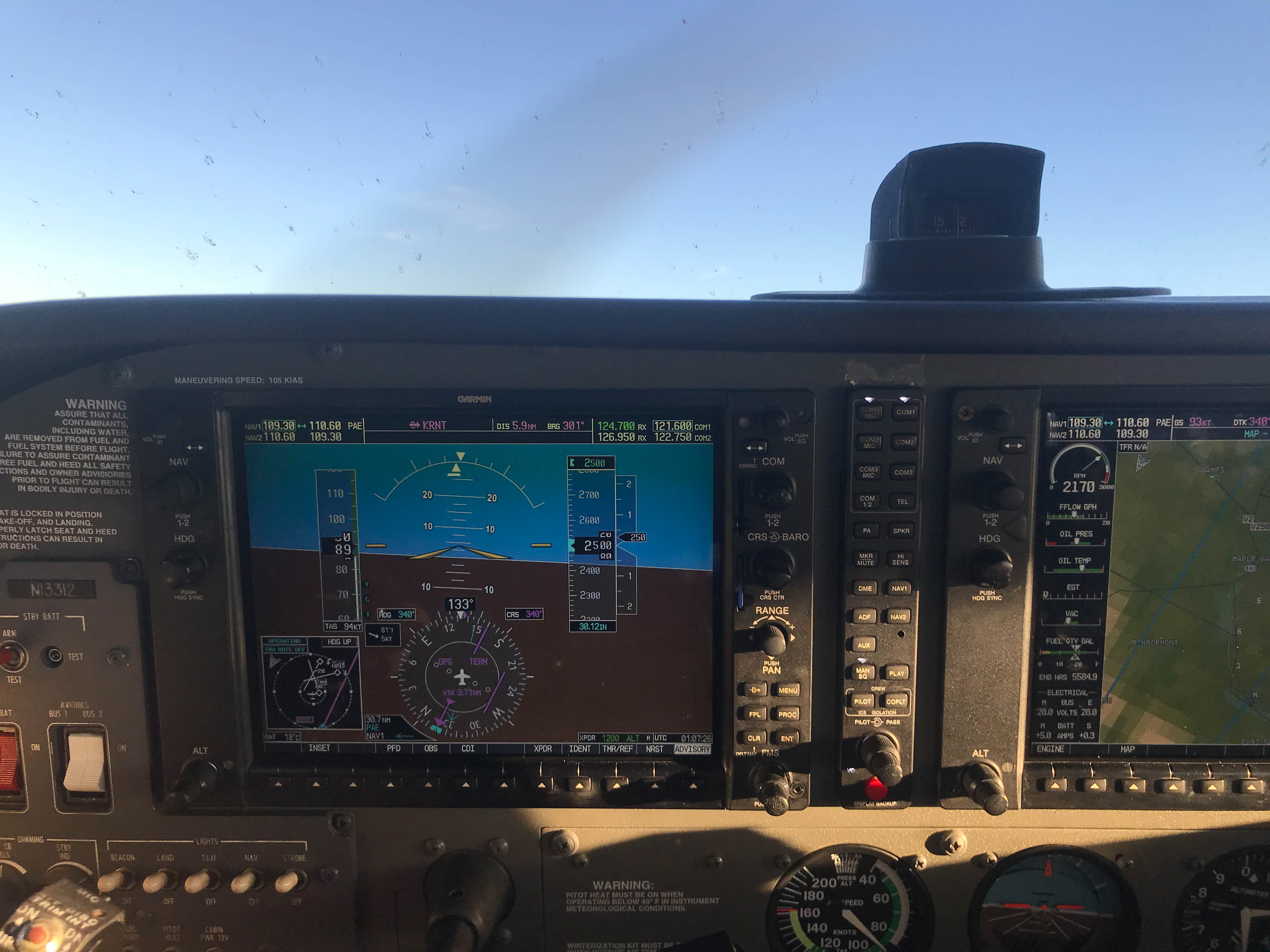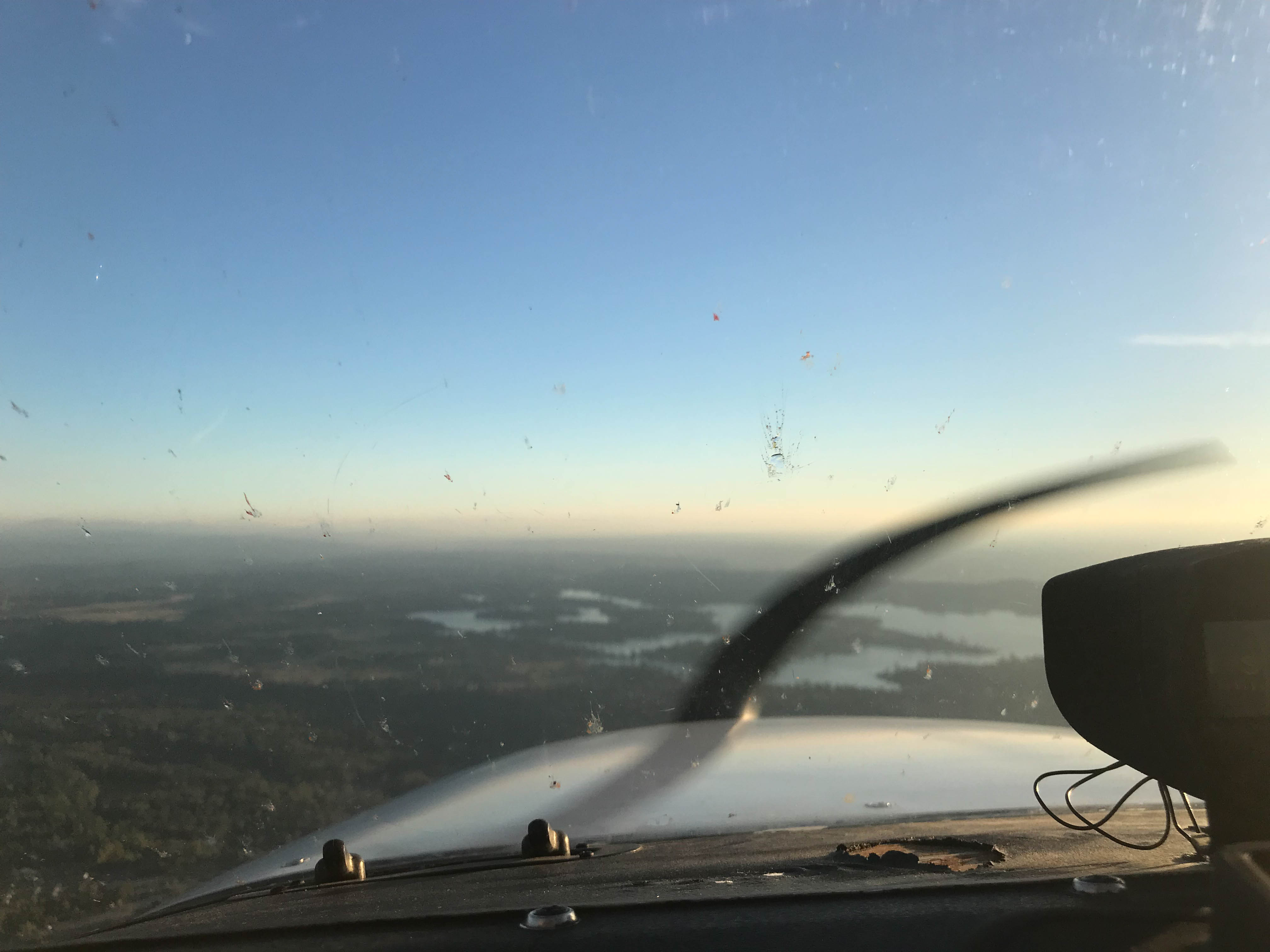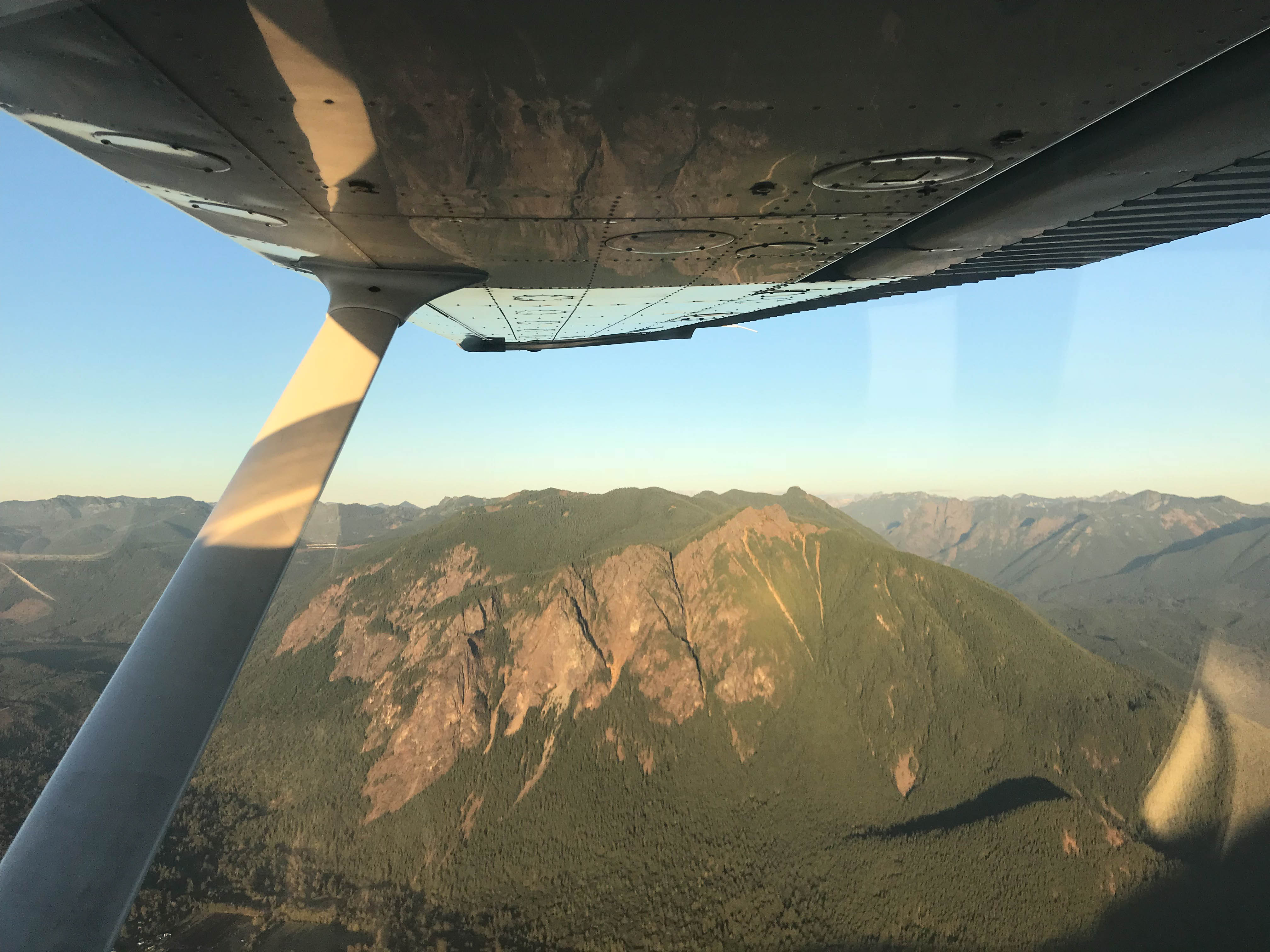Stage 2 Part One - Performance Takeoffs and Landings and Solos
In early September, I was standing on the ramp at Rainier chatting with Jamie. It was going to be one of our last flights together, and the airplane we were going to take was having a maintenance problem. While we waited for a quick repair to get made, we were chatting about the training process. I was expressing frustration with how long it was taking to get through stage one, that finding time on the schedule with my next instructor (Troy) was looking difficult, and would I be able to get everything done before the weather came in? That last point was a real worry. Seattle weather in the summer is impeccable. There’s usually little to no rain from early July through mid-October. But after mid-October, cloudy skies and rain is the norm. This doesn’t mean that I couldn’t fly, it just meant that flights would be cancelled due to weather with some regularity. In addition to this, Rainier is a super-busy flight school, and reserving planes can be a challenge because they get booked early. Jamie offered a couple of pearls of wisdom. “Stage one is the longest, hardest stage. You know nothing about flying, you have so much to learn, and figuring out how to land feels impossible. However, once you figure all that out and pass the first stage check, everything goes faster. Stage two is fun. You have navigation, more solo flights, night flying, cross-countries. There’s lots of occasions where getting a plane is actually pretty easy.”
He was right. While Stage 1 took me the better part of three months, Stage 2 took less than one. There’s a couple reasons for this. First, stage 2 builds on what you already know. It’s not completely foreign to fly an airplane, now you’re just getting better at it. Second, much of stage 2 is based on having and using knowledge, and that’s something I’ve been acquiring steadily. Third, all night flights happen in stage 2, and after dark, there is far less contention for airplanes. Finally, some of my flights would be solos, and I could choose to solo at odd times, when Troy might not be free, but a plane was. In short, all of a sudden, there was a lot more flexibility.
I’m going to talk about my Stage 2 experiences in 3 parts. In this first part, I’m going to talk about performance takeoffs and landings and my solos. In the second part, I’ll talk about navigation and cross-country. Finally, I’ll talk about night flying.

Part of the requirements that the FAA lays out for becoming a private pilot is the ability to takeoff and land on soft fields (like grass or gravel) and shorter-than-normal runways. Learning “shorts and softs” is the first part of stage two. Learning these skills is not particularly hard, as they build on the basic takeoff and landing skills, but they have their nuance. I find the soft field takeoff and the short field landing to be the harder ones. I’ll get nerdy for a moment, and would forgive you if you want to skip to the next paragraph. For all soft field work, the problem is that the surface is uneven, unpredictable, and probably bad for the wheels, suspension, struts of the plane, etc. The takeoff and landing technique, then, is all about keeping as much weight off the wheels and get it on the wings (essentially flying) as much as possible. When you take off, you add some flaps and then try to get it in the air quickly, but here’s the trick. You can fly an airplane close to the ground slower than you can when you’re higher, because of ground effect. Ground effect is essentially a cushion of air that gets trapped between the wings and the ground. If you try to get too high at a slow speed, the ground effect dissipates, you lose lift, and then bad things happen. So the technique for takeoff is to get it off the ground, then PUSH THE NOSE DOWN, which is uncomfortable, to say the least. You fly a couple feet off the ground as your speed comes up, then you start climbing out. I think it’s pretty fun, but the first couple times I tried it, I had a hard time convincing myself to fly so low.
Short field landings are actually relatively simple, but hard to execute. The idea is to come in slower (on my airplane, this is 60 kts, instead of 65), then touch down a little harder, then quickly hit the brakes and raise the flaps. I could execute this with no problems, however, the FAA standard is that you need to touch down within 200ft of your aiming point. I haven’t managed to really achieve that yet.

My first flight after solo was basically 2 hours of flying laps in traffic patterns working on these techniques. It was my first flight of working on new stuff with Troy, and it went well. He’s a pretty big flying nerd as well. It’s clear that he’s a CFI because he just loves flying. When we’re up there training, the conversation is all about the flying. A common conversation up there (and on the ground in debriefs) goes like this: RICK: “Oh my God, this is so damn cool.” TROY: “I know! Isn’t it awesome?”
My next flight was a solo. Now that I’m endorsed for solo, the syllabus calls for two more hour or so flights solo outside the traffic pattern. I have some restrictions as a student pilot. I can’t land at any other airports, and I have to stay within 25 nautical miles of Renton. But other than that, I’m free to take off, fly around, come back and do pattern work, whatever I want. The idea is to build confidence in flying alone.
For my first one, I did a loop that included a pretty lake (Lake Tapps), flying between two fairly steep hills, flying over Snoqualmie Falls, over my house, then back around to Renton. My flights thus far had been focused on achieving something specific. This flight was all about having fun and building confidence. My preflight that day might have been the most diligent ever. Now, the airplane and everything that could go wrong would be in my hands. When I pushed the throttle in for that first take off, I got both the thrill of flying and the raw fear of something untoward happening. It gave me a small taste of what having my license would be like. I texted Danielle when I was close to my house (yes, from the air, it only took a second) that I was approaching. She responded, “I see you! I see you!” This was a shocking reaction from her. She’s been nothing but supportive of my flying, more than I could ask for, especially with the major time and financial commitment it takes. However, she hasn’t been that interested in the details of it. I’d tell her about stuff that I was learning, and she’d listen, but she listened because she loves me, not because she’s super interested. When she was clearly super excited about me flying over the house, I was both surprised and gratified that she was sharing this cool moment with me. That flight ended with a hard, but safe, landing.

My second solo was about a week later. The weather was significantly worse, with a cloud layer at about 3500 feet. The goal for this second solo was to build solo time, and continue to feel more comfortable flying the plane on my own. The flight itself was uneventful. I flew around the practice area, flew over the house again, then went back into the airport to fly a few touch-and-goes. That said, there was a noticeable difference in how I felt. I was less nervous, and more comfortable. I didn’t feel as tight, and was able to enjoy the flying more.
So far, Stage 2 was going well. More and more, I felt pilot-y. That’s a word, right?